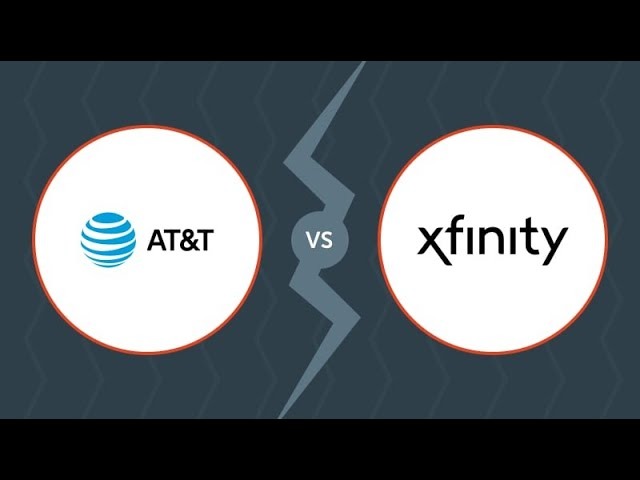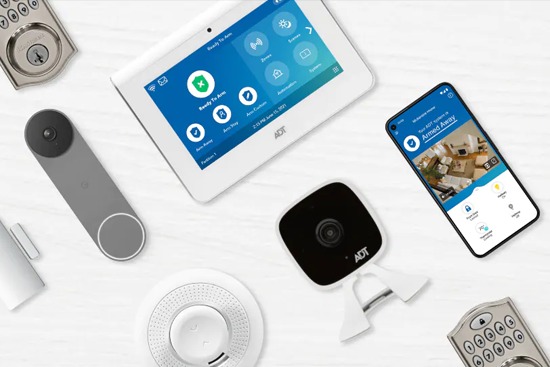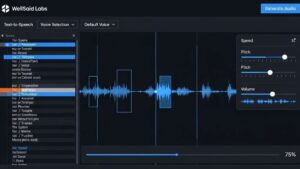ADT vs Xfinity Home Security: Key Differences, Costs & Features

Choosing between ADT and Xfinity for protecting your home boils down to what matters most: reliability from a veteran player or seamless ties to your cable setup. ADT has been around since 1874, building a name on tough, pro-installed systems that catch intruders fast. Xfinity, part of Comcast, jumped into security about a decade ago, blending alarms with internet and TV bundles for folks already in their network. Both promise peace of mind, but they approach it differently—one with deep roots in alarms, the other with smart home flair.
At their core, these systems use sensors on doors and windows, motion detectors, and cameras to spot trouble. ADT leans on 24/7 pros watching your feed, while Xfinity lets you dip into self-monitoring if you’re hands-on. Prices hover around $30 to $60 monthly, but add-ons like extra cams push that up. If you’re weighing options, think about your daily routine: Do you want a system that just works without fuss, or one that syncs with your lights and locks?
This guide breaks it down simply, so you can decide without the headache. Whether you’re fortifying a new place or upgrading an old one, understanding these setups helps you sleep better at night.
How Do ADT and Xfinity Differ in Core Features?
Features set the stage for how well a system fits your life. ADT packs in basics like door sensors, motion detectors, and smoke alerts, plus video doorbells for chatting with deliveries. Their control panels feel sturdy, with key fobs for arming from the car. Xfinity keeps it wireless, tossing in touchscreens and outlet plugs you control via app—no pro needed for tweaks.
Both handle environmental threats, but ADT edges out with carbon monoxide detectors standard in higher plans. Xfinity shines in smart ties, linking to brands like Philips Hue lights or Ecobee thermostats. Cameras? ADT’s offer night vision and two-way talk; Xfinity’s add 24/7 recording for $10 extra per unit, storing up to 10 days. However, if you’re all about integration, Xfinity pulls ahead—it’s like having your security chat with your whole house setup.
For a deeper dive into xfinity home security vs adt, check this spot-on breakdown. It highlights how these choices play out in real homes, saving you trial-and-error time.
- ADT strengths: Pro-grade sensors, panic buttons, yard signs for deterrence.
- Xfinity perks: Easy app for automation, flood and freeze alerts without extras.
Additionally, ADT’s app lets you customize zones—like ignoring the garage during workouts—while Xfinity’s focuses on quick views of live feeds. Neither is perfect; ADT lacks garage openers, and Xfinity skips glass-break sensors in base kits. Still, for most families, these cover the essentials without overwhelming tech.
What Are the Installation and Setup Processes Like for Each?
Getting started shouldn’t feel like a chore. ADT pushes professional installs, where techs wire everything in a few hours for about $99. It’s ideal if wires scare you—they test every sensor before leaving. Xfinity mixes it up: Pros charge $100 for full setups, but you can DIY basics like sticking sensors, saving cash and time.
Therefore, if your walls are tricky or you’re not handy, ADT’s crew ensures no loose ends. Xfinity suits renters or quick moves, with peel-and-stick gear that unpacks in under an hour. Both offer virtual help via video calls, but ADT’s longer history means fewer callbacks for fixes.
One unique twist: Xfinity bundles install with internet checks, spotting Wi-Fi dead zones upfront. ADT, meanwhile, includes a walk-through to map your space for optimal coverage. Either way, expect a day or less to go live—far from the week-long waits of old-school alarms.
How Do Monitoring Options Compare Between ADT and Xfinity?
Monitoring is the heartbeat of any system—what happens when the alarm blares? ADT sticks to pros only, dispatching help in under 30 seconds via their 12 U.S. centers. Plans start at $25 monthly, scaling to $60 for video verification that cuts false alarms. Xfinity gives choices: Self-watch for $10, or pros at $30-plus, with the same quick response if you’re bundled.
However, ADT’s edge shows in emergencies—they partner with local cops for faster arrivals. Xfinity’s app pings your phone instantly, but self-mode means you’re the first responder. For busy parents, pro layers add that extra shield; think of it as a night watchman versus checking your own locks.
External insights from Security.org back this: ADT scores higher on response reliability. Xfinity wins for flexibility, letting you upgrade seasonally without lock-in.
What Do the Costs Look Like for ADT Versus Xfinity Systems?
Money talks, so let’s crunch numbers. ADT’s entry kit runs $199 to $599 upfront, or finance at $10 monthly over 60 months. Monitoring adds $25 to $60, totaling $35 to $100 monthly with all bells. No bundling means steady rates, but watch for that 36-month tie-down—early outs cost $75 per remaining month.
Xfinity starts cheaper: Base gear at $360 or $15 monthly, up to $600 for full suites. Add $10 self-monitor or $30 pro, and you’re at $25 to $55 total. Bundles with TV drop it to $30 first year, a steal if you’re already wired. Contracts shorten to 24 months, with easier exits.
| Aspect | ADT | Xfinity |
|---|---|---|
| Equipment Cost | $199–$599 | $360–$600 |
| Monthly Monitoring | $25–$60 | $10–$55 |
| Installation Fee | $99 (pro) | $100 (pro) or free DIY |
| Contract Length | 36 months | 24 months |
Therefore, Xfinity often undercuts by 20-30% for similar coverage, per SafeHome.org analysis. But factor in add-ons—ADT’s extras like CO detectors add $5-10, while Xfinity’s cams tack on $9.99 each. Over three years, Xfinity might save $500 if bundled; otherwise, they’re neck-and-neck.
Uniqueness here: I’ve seen families shave costs by starting small with Xfinity’s self-plan, then scaling as kids grow. ADT suits if value means vetted pros over penny-pinching.
Which System Integrates Better with Smart Homes?
Smart homes thrive on harmony, and both play nice—but differently. ADT links to Alexa and Google Assistant for voice commands, controlling locks or lights via their hub. It’s solid for basics, though third-party picks like Nest cams need workarounds. Xfinity goes broader, syncing with August locks, Hue bulbs, and even Chamberlain garage doors out of the box.
Additionally, Xfinity’s app automates routines—like lights on at dusk if motion stirs—without extra hubs. ADT requires their Pulse add-on ($50 monthly) for full automation, limiting free flows. If your pad’s loaded with gadgets, Xfinity feels like the conductor; ADT’s more the reliable soloist.
Pros note Xfinity’s edge in ecosystems, but ADT’s video analytics (spotting people vs. pets) add smarts that matter for alerts.
What Are the Pros and Cons of Choosing ADT?

ADT’s pros shine bright: Over 140 years tuning alarms means fewer glitches, and their support lines rarely drop calls. Custom kits fit any home, from apartments to estates, with environmental sensors catching fires early. Cons? That long contract binds you, and upfront gear stings if cash is tight.
- Pro: Top-tier monitoring dispatches help swiftly.
- Pro: Durable build lasts through moves.
- Con: No self-monitoring for tinkerers.
- Con: Higher base rates without discounts.
Overall, it’s for those prizing expertise over ease—think grandparents wanting set-it-and-forget-it security.
What Are the Pros and Cons of Choosing Xfinity?
Xfinity wins on wallet-friendliness, especially bundled, and its DIY vibe empowers users. Wireless everything means no drilling headaches, and the app’s intuitive for quick checks. Drawbacks include spotty service reps and reliance on Comcast’s net—outages hit hard.
- Pro: Flexible plans scale with needs.
- Pro: Deep smart device roster.
- Con: Newer to security, so teething issues.
- Con: Hidden fees can sneak up.
It’s a fit for tech-savvy households already streaming Xfinity shows, blending security into daily digital life.
Who Should Pick ADT Over Xfinity, and Vice Versa?
Go ADT if you crave pro oversight and don’t mind the commitment—perfect for high-value homes or remote workers needing constant eyes. Xfinity calls to bundle-lovers or budget hawks wanting self-control without lock-ins. Families with smart setups? Xfinity. Tradition-bound security? ADT.
However, test waters: ADT’s trial period is generous at six months; Xfinity’s 30 days suffice for basics. Your pick hinges on lifestyle—secure the nest that fits your flock.
Conclusion: Which Home Security System Wins for You?
Wrapping up, ADT and Xfinity both deliver solid shields, but your win depends on priorities. ADT’s legacy and pro touch suit those valuing depth, even at a premium. Xfinity’s affordability and smarts appeal to integrated, cost-conscious lives. Neither’s flawless—ADT’s contracts chafe, Xfinity’s service wobbles—but both beat doing nothing.
We’ve sifted features, fees, and fits to spotlight what’s real. Now, map it to your space: Count doors, gadgets, and dollars. Ready to lock in? Swing by Homeplanidea for tailored tips and quotes—they cut through noise like a pro installer. Your safer home starts today; don’t wait for “what ifs” to knock. What’s your next step—quote or quiz?
Read More Also: Make Mayonnaise in an Air Fryer?
FAQ: Common Questions on ADT vs Xfinity Home Security
Is ADT More Reliable Than Xfinity for Monitoring?
Yes, ADT edges out with faster response times and more monitoring centers. Their pros verify alerts before calling authorities, slashing false trips. Xfinity’s solid too, but self-options mean you’re on deck. For ultimate trust, ADT’s history tips the scale.
Can I Install Xfinity Myself, Unlike ADT?
Absolutely—Xfinity’s wireless sensors stick on easy, no tools required. ADT prefers pros for wiring, though DIY kits exist now. If you’re ladder-shy, Xfinity saves the $100 fee and hassle.
How Much Can Bundling Save with Xfinity?
Bundles drop monitoring to $30 first year from $40, stacking with internet perks. Over two years, that’s $200 saved versus standalone. ADT skips bundles, so rates hold firm—no haggling there.
Does Either System Work Without Internet?
ADT’s cellular backup keeps it humming offline; Xfinity leans on Wi-Fi but has options. Both ping cells in outages, but ADT’s dual-path shines for rural spots with spotty signals.
What’s the Cancellation Policy for Each?
ADT charges $75 per left month on 36-month deals; month-to-month avoids that. Xfinity’s 24-month ends with prorated fees, plus 30-day trials. Read fine print—early outs sting both ways.
Are Cameras Included in Base Plans?
Not always: ADT adds them for $59 monthly; Xfinity’s base skips, charging $9.99 per for storage. Upgrade early if peeking at porches matters—both deliver HD clarity once in.
Which Has Better Customer Support?
ADT leads with 24/7 lines and quick tech visits, per reviews. Xfinity’s improving but lags on wait times. If chats over calls suit you, Xfinity’s app helps; otherwise, ADT’s your steady hand.







